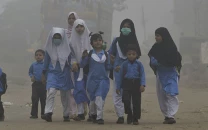Sindh’s witness protection law
Six months later, Sindh Witness Protection Act 2013 is nothing more than a piece of paper.

What is needed on the part of the Sindh government now is the same determination which led it to introduce the bill in the assembly in the first place. PHOTO: FILE
Six months ago, the provincial lawmakers introduced the witness protection bill that aimed to provide security to the men and women who step up to testify against hardened criminals. In light of the Wali Babar case, in which all witnesses were strategically gunned down ahead of the court hearings, the law aimed to allow witnesses to conceal their identities, testify over video conferencing, relocate to safer places and guarantee compensation for families in case a witness is killed during trial. These provisions allowed Sindh to boast of its efficiency and call itself, yet again, a pioneer of this law in the country. Six months later, this law is nothing more than a piece of paper that allowed the Sindh government to bask in the limelight for a few days. This reflects on the performance of the Sindh government, which appears to be working only for short-term glory.
This is not to say the MPAs and advisers do not know how to make laws; they seem to have all the right ideas. In essence, the witness protection law is remarkable. It has all the correct provisions and, if implemented properly, it will surely have an impact on high-profile trials and may eventually put the right people behind bars. What is needed on the part of the Sindh government now is the same determination which led it to introduce the bill in the assembly in the first place. The relevant departments must issue notifications, empowering the people identified in the law with the required powers, and make sure witnesses are provided security as promised in the six-month-old law. Perhaps, if the numerous ministries in Sindh were divided among competent ministers and not bundled together under the chief minister, we would be reaping the benefits of these laws that can be truly beneficial.
Published in The Express Tribune, March 28th, 2014.
Like Opinion & Editorial on Facebook, follow @ETOpEd on Twitter to receive all updates on all our daily pieces.














COMMENTS
Comments are moderated and generally will be posted if they are on-topic and not abusive.
For more information, please see our Comments FAQ